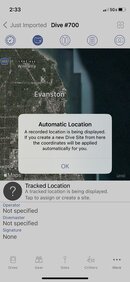That was already disclosed earlier on this thread and others -- three failures of the Datamax Pro, among the earliest air-integrated computers -- and a fourth which refused to boot-up in a local dive store, the last attributed to faulty batteries; the failures in the water, do to cheap-o o-rings and flooding.
I was actually blamed for the flooding for not disassembling the new, off the shelf computers, and checking the o-ring placements and battery compartments, one whose original boot involved Greco-Roman wrestling to remove -- and I am not a delicate flower. I managed a full twenty minutes on one, at thirty meters; the other two, less than that, even after the o-rings were replaced by a tech, who also swore at the boot.
Ironically, I dropped them for SeaQuest / Suunto in 1992-3 -- and apparently managed to be an statistical outlier who never had any issues with them, AI or otherwise, and whose depth sensors all jibbed, over thousands of dives . . .




